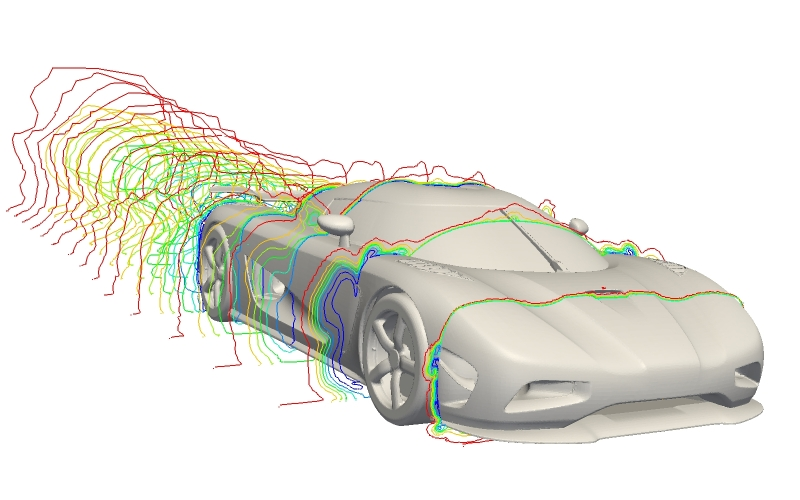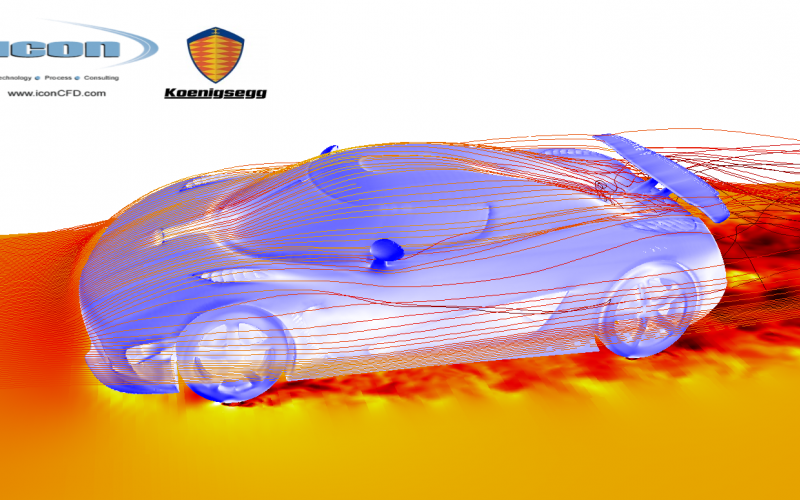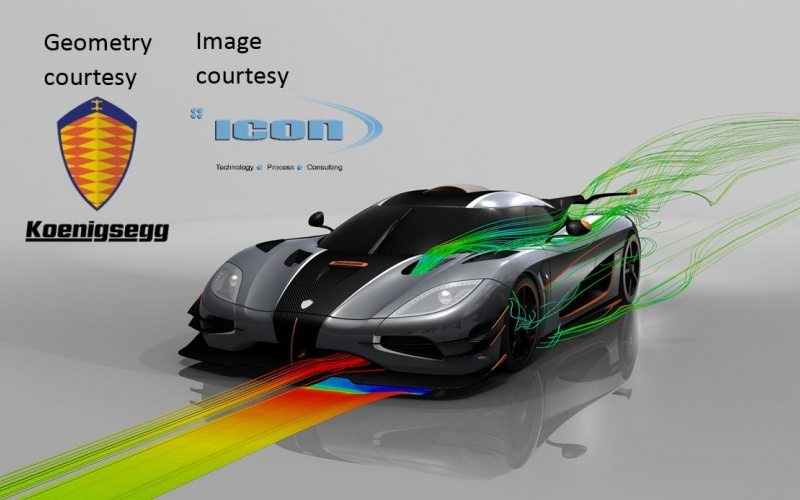HPC-Cloud-based simulation of sports-car aerodynamics
The Company
Koenigsegg is an SME based in Sweden. It was established in 1994 and is a leading designer and manufacturer of high-performance sports cars. In order to develop its product line, Koenigsegg needs to understand how air flows over its cars. There are two ways of doing this: the first is a wind tunnel test of a physical body and the second is to simulate the flow of air in a computer using Computational Fluid Dynamics (CFD). Although both methods have pros and cons, the standard practice for companies in the automobile industry is to use both alternately. Computational simulations are often used throughout the whole design phase, whereas wind tunnel tests are used only at certain phases of the design, since they are considered to be much more expensive from the cost and time point of view.
In the development of high-performance cars, intensive CFD simulations are carried out in order to reduce the cost of wind tunnel testing. Models used to replicate real-life cars with high accuracy, consisting of every geometric detail such as rotating wheels and integrated components (including heat exchangers, fans and condensers) can be very large and complex. In simulating such large models, the use of HPC can make a significant difference. Past experience has shown that the full aerodynamic design of a hypercar can be almost entirely conducted using CFD with minimal road and wind tunnel testing. However, in a production environment tight deadlines must be met, placing an emphasis on the use of significant HPC resources.
This case study was the first time that Koenigsegg had used HPC in the design of a hypercar, the One:1.
The Challenge
The challenge facing Koenigsegg was to perform simulations of the flow over its hypercars which were sufficiently detailed to model real physical effects accurately. Such simulations require suitable simulation software and expensive computer resources, which are normally beyond the means of an SME. However, the use of Cloud-based HPC offers the possibility of running such simulations on a pay-per-use basis, which is financially viable for an SME. The challenge was therefore to demonstrate the feasibility of using cloud-based HPC resources, the porting of a suitable simulation code to such resources and the cost-effective outcomes of the simulations.
The Solution
The use of ICON simulation software on a Cloud-based-HPC system has enabled Koenigsegg to reduce or even, in some circumstances, avoid wind tunnel testing. Accessing powerful computing resources remotely also reduces hardware expenses and maintenance costs. Before the start of this case study, Koenigsegg had only limited computer resources available in-house and little or no experience in HPC-based CFD. In this case study, 100% of the aerodynamic development of the Koenigsegg One:1 has been conducted using HPC- based CFD simulations. In less than eight months, hundreds of simulations to test various configurations have been carried out. The results were an impressive 250% increase in down-force with only a 15% increase in drag at 250km/h and with a 50% higher down-force at 440km/h, the vehicle’s maximum speed.
The Benefits
Tests have shown that the use of HPC-based simulation supported by external software and expertise led to a return on investment in less than three months for the production of a new car configuration. Significant costs can be saved and transferred to other critical parts of the development and production process.
The benefits obtainable by the use of the Fortissimo HPC-Cloud can be quantified as a 5% saving in operational costs, a 30% saving in design costs, a reduction of 50% in wind tunnel and physical testing, a 60% saving in prototyping costs, and a 30% shortening of the time to market. Furthermore, savings in development were about €90K per year on the design process, corresponding to a 1.5% reduction in overall development costs. These calculations take account of a computing cost on the Cloud-based HPC system of around €100K.
Participating Organizations:
End User: Koenigsegg
ISV: ICON
HPC Expert: NTUA
HPC Provider: CINECA
The challenge facing Koenigsegg was to perform simulations of the flow over its hypercars which were sufficiently detailed to model real physical effects accurately. Such simulations require suitable simulation codes and expensive computer resources, which are normally beyond the means of an SME.




